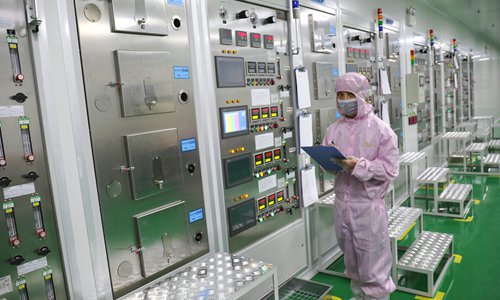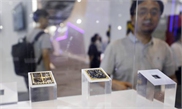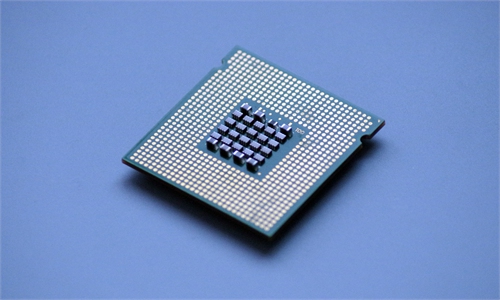SOURCE / INDUSTRIES
Semiconductor shares surged at prospect of China’s possible development plan

A worker at a semiconductor firm based in Chizhou, East China's Anhui Province Photo: VCG
Chip and semiconductor-related shares opened and closed higher on Monday - with several shares rising by the daily limit and extending Friday's gains - buoyed by media reports that the development of the third-generation semiconductor industry will be included in China's 14th Five-Year Plan (2021-2025).
Some shares, including Focus Lightings Tech and Xiamen Changelight Co, surged 19.98 percent on Monday when trading resumed after their shares hit the daily limit.
While rising share prices show the market is optimistic about the semiconductor industry's prospects, analysts cautioned that the industry requires huge investment in research and development (R&D), and that the industrialization application is also very difficult, meaning it won't be easy for China to close the gap quickly with leading producers in the US, Japan and Europe, who have been investing in R&D for decades.
The third generation of semiconductors are mainly made of broadband semiconductor materials such as gallium nitride (GaN), silicon carbide (SiC) and zinc selenide, usually more suitable for manufacturing high-temperature, high pressure and heavy current-resistant devices.
The third-generation semiconductor has important applications in 5G, new energy vehicles, consumer electronics, new-generation display, aerospace and other fields.
"In the upstream and downstream industrial chains, the degree of import dependence has gradually decreased, and the import dependence of some subsectors has been reduced to just 10 percent," Wang Peng, an assistant professor at the Gaoling School of Artificial Intelligence at the Renmin University of China, told the Global Times on Monday. "Current problems revolve around precision assembly, consumption rates and other tech issues."
"The semiconductor industry is rapidly evolving, and China's intellectual property rights, innovation and R&D capabilities need improvement," Wang adds. "Its production capacity in high-precision fields is still relatively backward."
Zhang Xiaorong, director of the Cutting-Edge Technology Research Institute, said that the US, Japan and Europe are the three biggest players in the semiconductor industry, while China still lags behind in terms of technology leadership and market share.
"US' Cree Inc and Germany's SiCrystal GmbH dominate over 85 percent of the market. Among all the SiC manufacturers, Cree is the strongest, with an SiC monocrystalline material that's a world's leader. The R&D on GaN monocrystalline materials started earlier overseas, with the US and Japan leading the way in terms of research. Japan's Hitachi Cable, for example, has already started mass production of GaN substrates," Zhang told the Global Times on Monday.
In China, it's the 4-inch SiC substrates that have been industrialized, one of the technological breakthroughs of the accelerating industrialization of China's third generation semiconductor industry.
But analysts warn that in general, the raw materials needed for the third-generation semiconductor industry chain are still highly dependent on imports, as well as manufacturing equipment.
Wang also noted that any boom in investment across the entire industry may result in ineffective or disorderly competition.
"Enterprises that do not meet the basic conditions should not blindly invest in the semiconductor industry. That would cause wasted investment and is not conducive to the healthy and orderly progress of the industry," Wang added.



